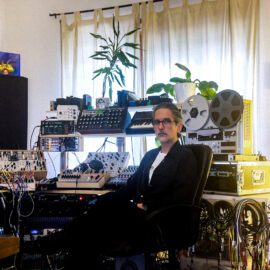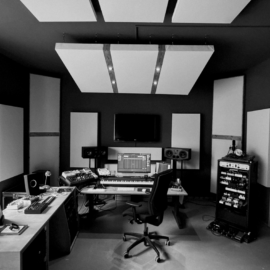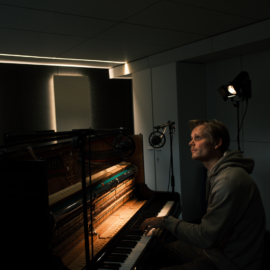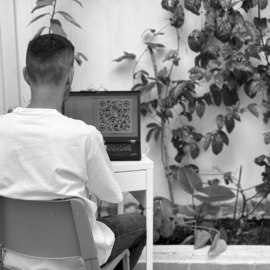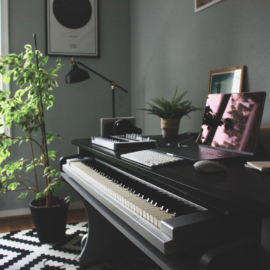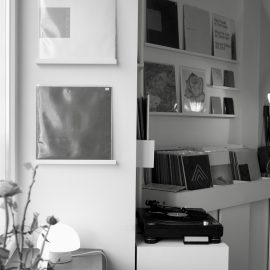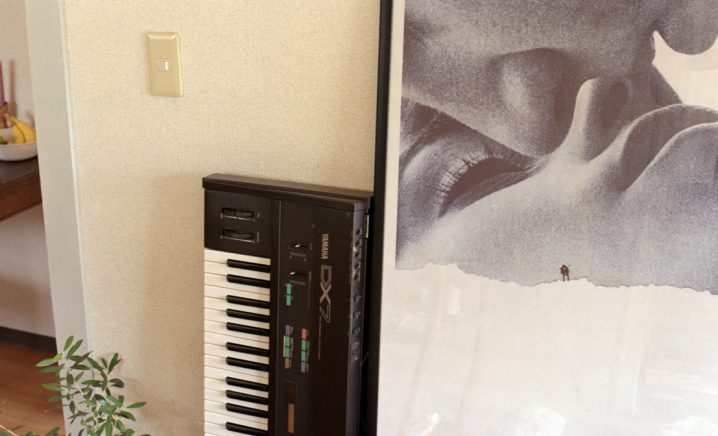
Lets start at the very beginning. Can you tell us how you got involved in composing, and what was your very first piece of gear?
There’s a lot of music and art in the background of my family. There was always a different kind of inspiration from everyone – whether musically from my mother and grandmother who played the piano, my uncle who played the organ, or visually from my father as a photographer, and my grandfather as a cartoonist and amateur filmmaker. When I was a child they always encouraged my imagination and creativity.
Growing up in the 1980’s was also very important. Cassettes were common, and some of my early toys between the ages of 5-10 were cassette voice recorders, like the red-and-white Daylin or the brown Fisher-Price models. They had a built-in mic, and the quality was terrible. Whatever you recorded sounded like it was in a rainstorm, clunky, or drenched in internal noise. I remember not being tall enough to reach the VCR, so I’d use the cassette recorder to tape my favorite parts of movies I liked. I would do the same with music, whether it was by Henry Mancini, The Carpenters, or Bach. I’d find a particular place in the song that I liked, something that gave me a good feeling, and I’d record that same part over and over onto the tape. I remember going back and listening to some of them later, particularly the movie samples, and I remember not being sure where they even came from. Somehow, I think that was an early, unintentional experience that surely influenced my interests later on.
There was really a huge space between this time and when I started actually composing music. Even that was started without any expectations. I was going to university, studying literature, film, and writing. I always liked film scores, and I had discovered Brian Eno’s Discreet Music, and was listening to a lot of music by people like The Hafler Trio, Stockhausen, and Oval. At some point I decided to start trying it on my own. The first keyboard I ever got was a Bontempi air pump organ. Incredibly cheap. I think it was less than $5, or free. It sounded horrible. Some of the keys stuck down, but just pumping air through it would keep it going. The first reel-to-reel player I got and started trying to make loops with was a National. Just a cheap, portable 5-inch reel machine. I used it for the first few years, and early albums like Sunlir, Ceylon, and Sadha were all made with this.
How did the move to Japan impact your setup, production, and the overall flow?
When I moved to Japan I left behind at my family home or got rid of all of my equipment. The only thing I brought with me was my father’s Sony Tapecorder 262 reel-to-reel. Everything else I have I’ve acquired since I’ve been living in Japan. My friend Terre Thaemlitz (who lives a few stations away) even gave me a stack of unused reels to use for tape. I didn’t have anything at all, just a good reel-to-reel and the rest of my possessions packed into one suitcase.
I think my experience in organizing and choosing the right equipment definitely got better after moving to Japan. In the US it didn’t ever feel as hands-on to me. Living in a rural place there’s almost no access to instruments or equipment other than through the internet. Being able to see more instruments and options and get a feel for what is right and more importantly what isn’t has been one of the best things about living Tokyo. The way things are now, after 10 years I feel the most comfortable that I’ve been. For now, it’s the best environment for making music for me.
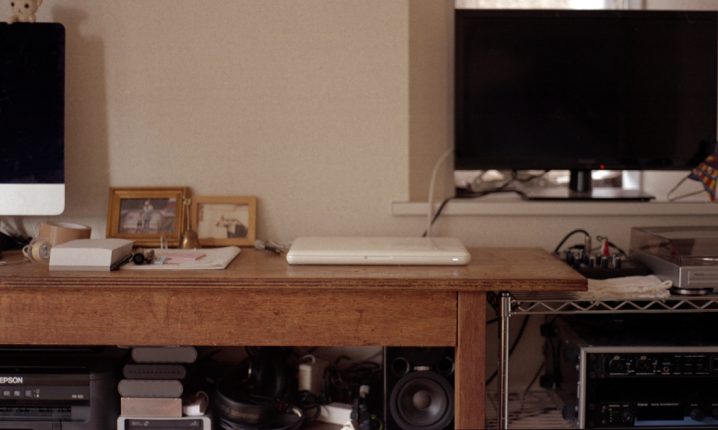
How many different studio iterations have you gone through, and what does your final setup look like right now?
Honestly, I’ve never really had a studio, exactly. The studios that I’ve been in have never really felt like comfortable environments to me. It doesn’t feel inspiring to me being in a dark room surrounded by instruments, cables, and computer screens. Even in a nice room, sometimes it feels overwhelming, and misleading. For me that disconnects the reason for making the music in the first place. That being said, the place itself is important, but not in the way of acoustics, or anything directly related to the music itself. The space where I like to make music changes, so I like to keep limitations as small as possible. In my family home back in the United States, I would keep instruments in different places through the house. Some days it felt right to make something in the dining room on the wood floor. Other days, maybe with a view of the morning sun by the bay windows in the back bedroom.
For several years I was traveling and living in places for short times, and I only had really basic equipment. Maybe only a tape machine or cassette players, a few effectors, a laptop, and sometimes a keyboard – all these things rotated, and usually existed for only that one place.
Now things have slowed down, and I’m not moving around much anymore. Now I almost always keep things put up; in closets, leaned against a wall, or on a shelf. I admit it’s somewhat inconvenient having to pick up what you want, carry it to a different place, and plug it in every time – but it also keeps more possibilities open. I think moving to Japan was the best inspiration for creating the proper studio environment for me. For example, in Japan, if people sleep on a futon in room with tatami mats, usually after they wake up they fold the futons and put them in the wall closet. Then the room is empty, except for what furniture or shelves remain. For some reason, if I keep instruments set up in a certain way or in a certain place, it feels like I’m keeping the same idea stuck in my head. When you can take them out and arrange them in a new way based on your ideas, following the feeling you have, or in response to your surrounding, then it makes something different possible. Starting with a clean view helps keep the directions free.
At the moment, though I have a compact setup, it’s spread throughout 3 rooms. We have a lot of open space, but it feels more like a home. Creating music in this kind of environment feels really comfortable.
In our main living room, Miko and I share a desktop computer for Oh, Yoko and our own projects, and I use a laptop. We have a mixer, a record player, monitors, and a small rack with an audio interface and reverb. Recently this is also our 7-month old daughter’s studio for banging her shakers, tambourine, and other percussion instruments.
In other rooms I have reel-to-reel players and related-equipment, a couple of keyboards, cassette players, tapes, and other things spread out, along with Miko’s guitars and keyboards. It feels sparse and simple, but when you get the right balance, there’s no reason to change anything.
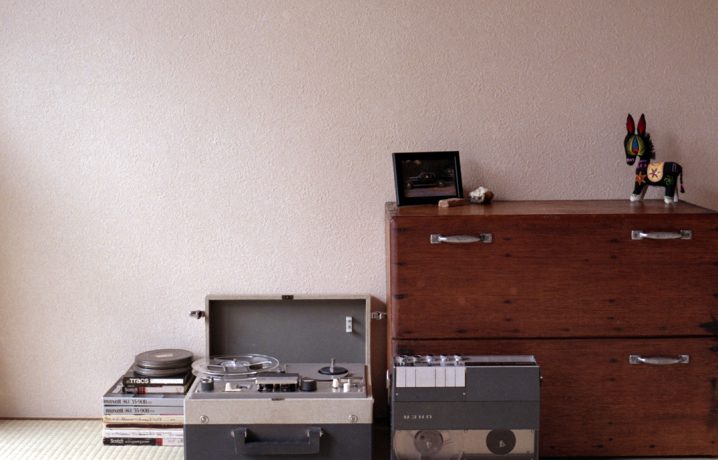
Tell us about your favorite piece of hardware.
It would have to be the Sony Tapecorder 262 that I brought from the US. My father actually bought it in Japan in the 1960’s, and my uncle kept it until about 5 years ago, when I took it and started to use it, finally bringing it with me here. It’s not a particularly special reel-to-reel, and it only has the basic options, but it does everything I need, and it’s strong and reliable. If I’ve used tape or tape loops in the last 5 or 6 years for production, I’ve used this.
And what about the software that you use for production?
For the most part, I only use software for mixing, mastering, and recording from tape, instruments, or other sources. I really only use Logic on our main desktop computer and my laptop, and before I starting using this program about 4 years ago I only used the free software Audacity. I’m not really interested in plugins, and a graphic equalizer is really the only thing I use at all, though it’s also one of my most important tools.
A white macbook is my normal computer, and I use it for some basic music production with an older edition of Logic, but mostly for editing photos, writing, and online work. There’s some nice free music software like AU Lab that is sometimes useful, and I have max/msp, but I haven’t used it for much over the years, if ever for anything recorded. Just a few live shows, like on the tour with Machinefabriek in the Netherlands and Belgium. In addition, older computers can also be useful tools. In a way they can be like an instrument that has different features per edition or age. Sometimes I use an old powerbook g4, and this really has some of my favorite music programs that I’ve ever used. It was so different from current software, more technical, or openly functional. It seems like it doesn’t guide you. It’s just a tool. Almost all of them are unavailable and unknown now, and for some reason, they were all incredibly powerful. It was the second laptop I owned, and I still go back to it sometimes, if I want to put something extra into the music. It taught me a lot about feedback and time stretching.
What equipment do you use for field recordings?
I use a simple Roland R-05 and a cassette walkman. I don’t use external microphones, and I prefer if it’s a more natural, somewhat raw result. When everything is too still or staged, it doesn’t seem true anymore. It just seems like nothing is happening, or whatever you’re waiting to happen is waiting for you to press stop so it can continue. It’s like taking a photo. Sometimes if you wait too long trying to catch the right moment, it will have already passed. Even though most of my field recordings aren’t special or are ordinary, they’re just memories. Not every memory is special, but it still has a place in your experience, and you remember more about that moment when you can hear what it sounded like, even if it doesn’t sound extraordinary.
Is there a particular piece of gear that you’re just dying to get your hands on and do you think one day you’ll have it?
I’d have to say my Uncle’s Wurlitzer Theater Organ from the 1920’s. My Uncle bought it and took about 15 years to restore it. It’s really incredible. At his home in Mississippi, he lives in a house from the late 1800’s, that has several small buildings connected to the house. One of them was the library or ‘study’, and it was modified to include the organ, with all its pipes and instruments. It’s really incredible seeing and playing an organ with ‘effects’ that are real instruments, such as a piano, drums, cymbals, castanets, car horns, and sleigh bells. Looking under the pipes and seeing all these instruments sitting there makes pre-recorded samples seem stupid.
Do I think one day I’ll have it? I seriously doubt that. Besides, I’d have to live in my hometown to use it.

Can you please share some aspects of sound design in your work?
I like it to be as hands-on as possible. I guess that’s one reason why I like working with tape more. The process of recording pieces of music and sounds, cutting with scissors or a razor blade, pasting with tape while sitting at a wooden table or on the wood or tatami floor is nice. It feels more like carpentry, sometimes. I remember my grandfather in his basement workshop, making chairs, bookshelves, and furniture. It was always dark in the back, with some light coming through the side windows, and the morning mist rolled outside the open doors, blowing a cool breeze inside. I remember how he looked when he’d look closely and make pencil marks for cutting lines, and I’m always reminded of that when I’m working on something.
It’s really the same when I’m working with a synthesizer. Even though many people find it tedious, I really enjoy shifting through buttons and patches on the DX7, to be really specific about the type of sound you can generate. I prefer that to more knob-based synthesizers. I prefer it than having to look through endless folders or cycle through plugins and unlimited options, staring at a computer screen. Having limitations is important. For some reason that pinky-finger LCD screen makes it much more simple, and let’s you visualize it more in your head. It may be missing a lot of options, but it has enough, and I’ve used it for creating a lot of different things.
Any particular new techniques that you’re currently experimenting with on your latest work?
Lately I haven’t been experimenting with too much. I’m in a comfortable place, and most of all I’m trying to refine and do what I’ve learned over the last 10 years in the best way I can. In a way it’s a technique too, because just the working method of spending a longer time working on music and making shorter pieces instead of album-sized single tracks changes many aspects of the music process.
As far as new things, right now I’m interested in using the tatebue (or recorder) for source sounds of tape loops. It’s a Japanese flute that most school students have, so it’s very simple. However it sounds nice on tape, slowed down, layered with synthesized harp (for instance), and hall reverb.
What does your live setup look like, and what do you bring with you on a tour?
I used to play shows only with a laptop, because I wasn’t very confident using other instruments, or didn’t have the right equipment. But it never really felt right – laptops were not even representative of my music or the way I make my music, it was just a convenient way to perform. It just felt unsatisfying, and unreliable. When I moved to Japan, I made a rule for myself to abandon using laptops and to use cassette or reel-to-reel tape instead.
Over the last 4 years I’ve gone through a lot of changes with managing my gear, and in the last two years I think I’ve been able to determine what works the best, and what is most manageable to carry. I try to keep it very simple. For the reel-to-reel machine, I use the Uher Report Series. It’s the most compact and reliable 5-inch reel system that I’ve found. It doesn’t have as many features as the Nagra, but it’s lighter and more inexpensive. It’s more important to use things that have what you need.
When I use cassettes I use the Panasonic RQ series (which is still manufactured) and Walkmans. Usually I won’t have any effects except an Electro Harmonix Graphic Equalizer, and otherwise only a mixer. Though I’m using pre-recorded tapes, I try to never repeat the same music twice, and most of it hasn’t even been released before. I don’t play live very often, so it makes it more special and challenging.
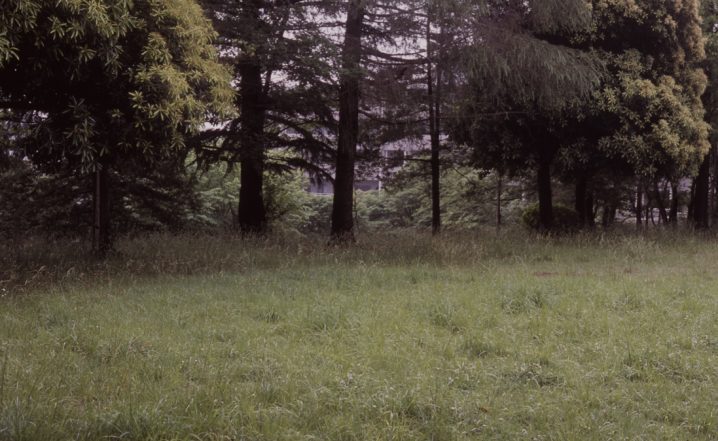
What is the most important environmental aspect of your current workspace and what would be a particular element that you would improve on?
Aside from having an open space in the comfort of our home where music can be a part of its atmosphere, the surroundings of the location makes a lot of difference. For the last 2 and a half years we lived in West Tokyo on a hillside. It was really special to be able to sit at the table or on the floor, and look out the windows and see rooftops below in the distance. If you looked west you could see Mt. Fuji, and to the east, at night Tokyo Tower would glow in the distance. Recently we moved further south to Yokohama close to the border of Tokyo, and we live across the street from a park. It’s different from where we lived last, but looking out our windows and seeing green (or now, the fall colors are appearing) is a new and calming surrounding. I’m sure it will have a new and fresh contribution to music, and I feel like it already has.
I can’t really think of any way to improve what we already have. I wouldn’t change anything. At first crows were a problem. They came and sat by the edge of the park at about 4 a.m. everyday, but after I gave my owl hooter toy to my daughter, they’ve disappeared completely. I’d recommend it if you have a crow problem.
What can you tell us about your overall process of composition? How are the ideas born, where do they mature, and when do they finally see the light?
Everything is fueled by some kind of inspiration, whether it’s a memory, a recent experience, the day itself, or a mixture of them all together. It seems like it just comes naturally, and I don’t plan it too much. Usually since I’m using a limited amount of equipment with few options, the sound direction stays largely focused in the same direction, and strays from there. I don’t try to build pieces too often that have too many different types of sounds, or things that were made at different times overlapping simultaneously – usually what is together was all made around the same time, in one sitting.
It’s not improvisation, because to me improvisation seems more random, or directionless. Though it’s similar, I get the melody (or something like it) stuck in my head, and even if what comes out is different, the inspiration or feeling stays about the same. Then, there’s a lot you can do with looping, eq, some effects, or changing the speed. I’ll try things until I can get something close to what I like, and then record it.
Later I’ll go back and mix them further, edit them individually, and shape it into more of a piece, to then be something on their own, or stringed-together in more of a collage form, but they almost always have simple, straightforward beginnings.
After the piece is complete, how do you audition the results? What are you reactions to hearing your music in a different context, setting, or a sound system?
When I’m working on things, I’ll listen to it in different places and different ways, but I think that the two most important ways are with headphones at home (where it’s quiet), and with really cheap headphones on the train (where it’s noisy). At home I only listen to music from a CD/cassette stereo, and the record player, so hearing it there would wait until a test pressing or the final version arrived. Hearing it in these different situations, at home and on the train lets me hear it the way I usually listen to music.
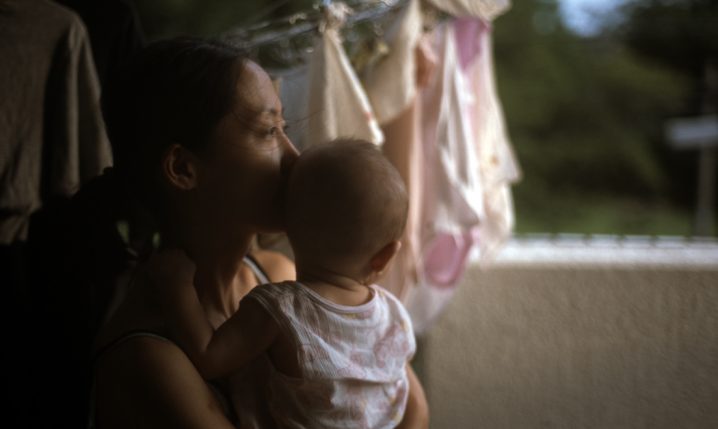
Do you ever procrastinate? If so, what do you usually find yourself doing during those times?
I procrastinate a lot, for a lot of different things. Though sometimes, making music is usually something I do when I’m putting off doing something else. It’s a creative relief and has many purposes, but I’ve never thought of it exactly as work. The release process is a completely different thing; that’s definitely work. But regarding music, I produce far more than I can possibly release, and if I procrastinate any part of it, it’s likely the part where I take time to work on it for a long period of time, or try to get it released, which is the least-fun part of the process.
I like to keep the music fresh, and it’s much more difficult for me to make it and work on it slowly. It feels like suppression in many ways, but I think taking longer with each piece helps the end result. Spontaneity is still existent and important, but it’s only a part of the process.
What gets you inspired?
Being with my family, in our neighborhood, our city, on trips, and all the memories that come from it and everyday life.
Celer‘s new album Sky Limits is released on LP from Two Acorns and CD from Baskaru in November.
